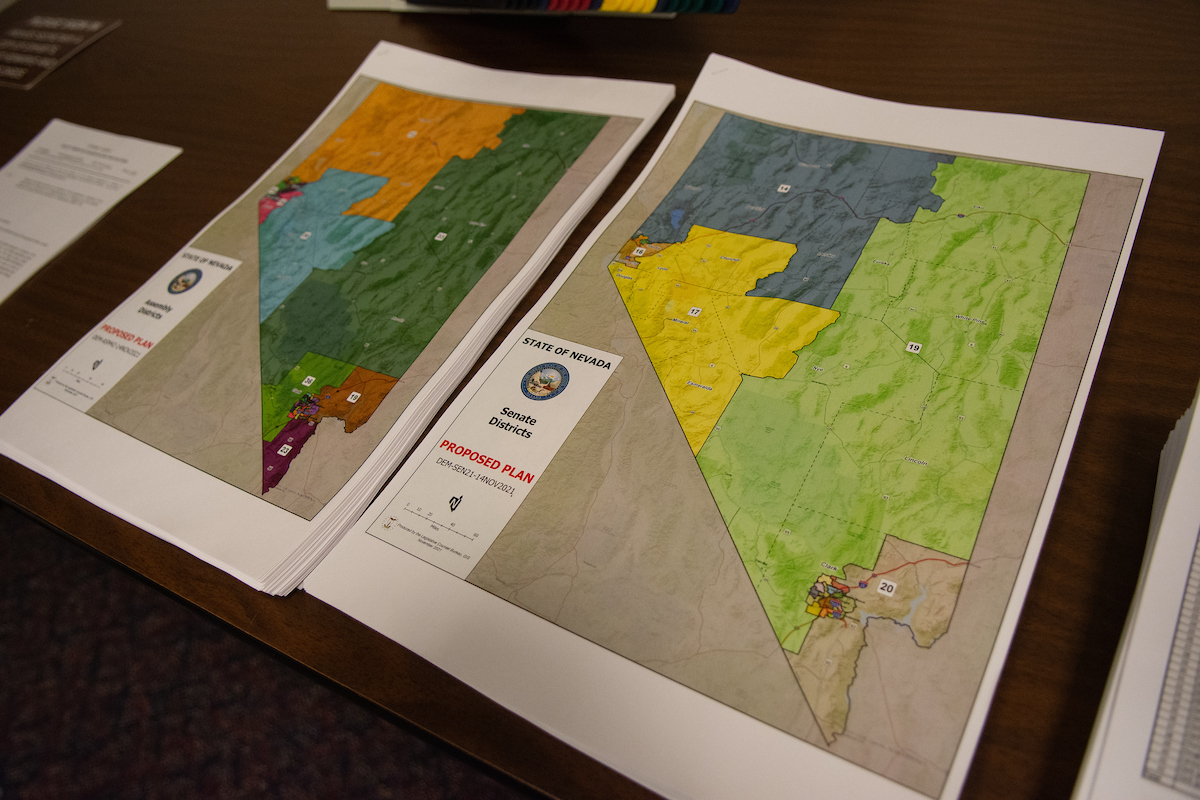Nevada Supreme Court strikes down independent redistricting commission ballot questions

The Nevada Supreme Court on Friday unanimously affirmed a district court ruling that two proposed ballot questions each seeking to establish an independent redistricting commission are legally deficient.
The order found that the measures — identical save for when they would go into effect — were invalid because they would create a new state body (an independent redistricting commission) without establishing a revenue source to pay for it. Each sought to establish an independent, seven-member commission to draw congressional and legislative district maps, thereby removing state lawmakers’ role in the redistricting process.
The success of the Democrat-led lawsuits, filed on behalf of Las Vegas-based Democratic voter Eric Jeng, who is the executive director of the Asian American, Native Hawaiian and Pacific Islanders-focused nonprofit One APIA Nevada, preserves the Legislature’s control of the redistricting process, which last took place in 2021. Then, Democratic state lawmakers and Gov. Steve Sisolak (D) drew and approved maps that maximized the number of competitive districts favoring Democrats in congressional and legislative races.
The court’s order disagreed with arguments made by Fair Maps Nevada — the group behind both ballot questions — that members of the redistricting commission could serve as volunteers and that any funds needed to create the body would offset what the Legislature currently spends on the redistricting process. Unlike similarly challenged ballot initiatives that required existing state agencies or bodies to take on a new role, the court wrote that the initiatives would “clearly require a new State entity to conduct redistricting.”
“By its terms [the Constitution] requires Fair Maps' initiatives to themselves raise the necessary revenue to create and maintain the Redistricting Commission; it is not enough to simply hope that savings elsewhere will offset the Redistricting Commission's costs,” the order states.
Attorney David Fox, who represented Jeng, did not immediately respond to a voicemail requesting comment.
Sondra Cosgrove, a College of Southern Nevada professor who has helped lead the ballot initiative process as president of Fair Maps Nevada, said she was “disappointed” by the Supreme Court's decision.
“I think this is a bigger threat to direct democracy in our state,” she said in a Friday interview, explaining that any future proposed constitutional ballot initiatives that may need funding would need to write tax policy into the Nevada Constitution.
Fair Maps Nevada began pushing the proposed ballot measures late last year — the third attempt by the group to put an independent redistricting commission before voters after efforts in 2020 and 2022 were unsuccessful.
If supporters refile the ballot initiative, Cosgrove said they’d need to include a revenue source such as increasing the marijuana tax. However, she said that would likely violate the single-subject rule that ballot petitions are limited to, opening it to a legal challenge or leading to a court battle about how much money was needed to fund the petition.
She added that there’s no clear understanding of how to include a funding mechanism in a ballot measure seeking to amend the Constitution, and if a ballot initiative had a statutory tax, lawmakers could effectively kill it by removing the tax.
“I think we've lost the ability to run constitutional amendment ballot questions with this ruling,” Cosgrove said. “Everyone who wants to run a constitutional amendment is now subject to a legal challenge that says they want to spend $1 they have to raise a tax to spend that dollar.”
Cosgrove said she’s not deterred by the ruling and plans to focus on another ballot measure to establish open primaries and ranked-choice voting in Nevada, known as Question 3, that will go before voters this election cycle for the second time after narrowly passing in 2022.
“I'm going to double down on [Question 3],” she said. “Because we need to have other mechanisms to get around gerrymandered maps.”
